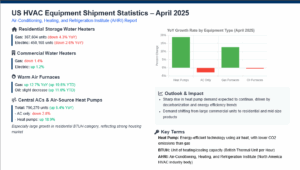Diverging Definitions of PFAS Between the U.S. and International Community Raise Concerns for the Refrigerant Industry
In October 2023, the U.S. Environmental Protection Agency (EPA) finalized a new rule that sets a narrow definition of PFAS (per- and polyfluoroalkyl substances), explicitly excluding fluorocarbons (F-gases) and their atmospheric breakdown products, including trifluoroacetic acid (TFA). As a result, refrigerants such as HFO-1234yf and the TFA they generate in the atmosphere are not subject to federal PFAS regulations in the U.S.
The EPA defines PFAS as “chemicals containing at least two adjacent carbon atoms, where one is fully fluorinated and the other is at least partially fluorinated.” This differs significantly from the broader OECD definition, which includes any chemical containing at least one fully fluorinated carbon. Critics from the scientific community warn that the narrower EPA definition may enable regulatory loopholes and downplay potential health risks.
In contrast, the Canadian government aligns with the OECD’s broader definition and treats HFOs and HCFOs as PFAS. In July 2024, Canada released a Risk Management Scope document outlining plans to evaluate the availability of alternatives, socio-economic impacts of substitution, and PFAS content in products. Final regulatory actions are expected to follow.
Within the U.S., 23 states, including Maine and California, have adopted broader, OECD-aligned PFAS definitions. These states are moving toward banning products containing F-gases and TFA as early as 2032 or 2040. Notably, Maine’s revised PFAS law, effective August 2024, prohibits the sale of PFAS-containing products—including HVAC equipment—starting in 2040. Substances such as HFO-1234yf are classified as “intentionally added PFAS,” targeting reductions in both usage and downstream TFA formation.
These diverging national and subnational definitions highlight a growing regulatory patchwork that is creating uncertainty for the refrigerant and manufacturing sectors. The situation underscores the increasing need for international alignment and consistent standards.
Key Terms
- PFAS (Per- and Polyfluoroalkyl Substances): Highly stable synthetic chemicals that persist in the environment and may pose health risks.
- TFA (Trifluoroacetic Acid): A breakdown product of certain HFO refrigerants; detectable in blood and classified as PFAS under the OECD definition.
- OECD vs. EPA Definition: The OECD applies a broad definition encompassing F-gases and TFA, while the EPA uses a narrower structural definition that excludes them.

